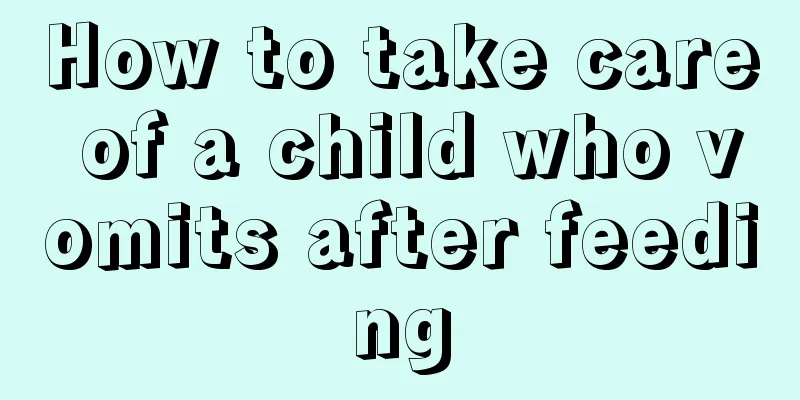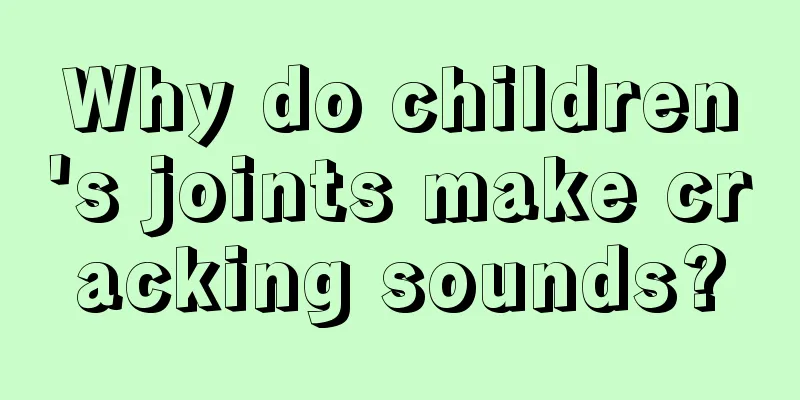Baby's monthly growth

|
Understanding the growth and changes of the baby every month can help parents take better care of the baby after the baby is born. For example, the baby's head can be kept upright for a short time when the baby is 1 month old, and the baby will respond to the mother's voice; the baby can lift things with his feet when the baby is 2 months old, and will occasionally make some sounds; the baby begins to recognize the mother when the baby is 3 months old. Let’s learn more about it in detail~
When being held, the head can remain in an upright position for a short time. Hold the baby upright with his feet touching the bed or table. You can see one of his legs straightened and the other leg lifted. When the mother puts her finger into the baby's palm, he immediately grabs it. Responds to mother's voice. Brightly colored toys can be seen hanging overhead. 2. 2 months When babies lie on their backs, they kick things with their little feet. When a baby is picked up, his head will sway as he tries to maintain an upright position. When a baby is given a toy, he may grasp it unconsciously for a moment with his palm facing down. Babies laugh when someone teases them. Can make sounds like "ah", "oh", and "hmm". Will use eyes to track toys that move in front of him. 3. 3 months The baby's head moves randomly. When the baby lies on his stomach in the bed, his head can be raised and his upper body can be supported by his elbows. When you hold your baby upright, he will lift one leg and take a step, then lift the other leg and take a step. Start paying attention to the toy you hold. Will pull at one's clothes unconsciously. Getting to know my mother. They can react quickly to yellow and red toys. 4. 4 months Children's movements are mostly symmetrical. When in the prone position, the child can lift his head and make a 90° angle with his shoulder blades. When the child is supported, his legs can support his body. Fingers are often stretched out. Often puts toys in hand into mouth. He often grabs his clothes and pulls them over his head. Often chewing fingers. 5. 5 months The child can turn over easily. In prone position, there are signs of wanting to crawl. Keep your back straight when sitting. Can use one hand to grab the toy he wants and can catch it. If he can't hear the familiar voice or see his mother, he will become very annoyed. Like to repeat an action over and over again.
While lying on your back, you can lift your head and legs. The turning movement is more flexible. While lying prone, you can slightly lift your head and legs at the same time. You can sit in a chair. You can sit on the ground with your hands for support. When standing, likes to jump. You can pick up a small piece of wood about 1 inch long next to you with your hands. You can play with the toy with both hands at the same time. You can turn your head to follow the sound. The eyes begin to pay attention to the movements of the hands. 7. 7 months I don't like lying in bed for a long time. When lying prone, he can use one hand to pick up the toy in front of him. When lying on your back, you can put your feet in your mouth to chew them or play with your toes with your hands. Can pass toys from one hand to another or put them into the mouth to chew. I smile when I see myself in the mirror. Can play with toys by knocking them on the table. When he is sitting, he can stretch out his hands to grab toys. Able to say fixed sounds such as “da, da”. Begins to recognize strangers.
Can sit independently for about 1 minute. You can lie down from a sitting position and start crawling. You can stand by holding the bed rails. Can sit from standing position. You can use your hands to pick up your favorite toys. Often chews toys with mouth. Outdoors, children begin to pay attention to the people and things around them. If you take away a child's favorite toy, he will cry. 9. 9 months You can sit there for up to 10 minutes. Can crawl forward and backward flexibly. Able to stand and walk along the bed rails. You can use a bottle cap to cover the bottle mouth. When his name is called, he answers. 10. 10 months Able to sit still for a longer period of time. Able to stand steadily by holding on to something. Toys that can be hit with hands or stacked on the table. Can wave and gesture. Can say simple sentences like dad, mom, etc. You can smile at the mirror. 11, 11-12 months Being able to turn your body freely while sitting. Able to stand independently. Can walk with hand support. Able to pick up small objects such as coins, buttons, peanuts, etc. with hands. Can put small toys into the box. You can pass the toy in your hand to others, but don't let go. Likes to imitate adults' actions - such as combing hair. Likes to talk in a toot and chirp sound. |
<<: Baby Chinese Medicine Massage
>>: Baby's white spots due to lack of pigment
Recommend
What can babies eat to eliminate phlegm fastest?
Because of colds, bronchial tubes, or lung inflam...
Is it normal for children to have a rebellious period?
Many mothers may have experienced such a phenomen...
What's wrong with the child's chest pain?
The heart pit we often refer to is the concave ar...
What to do if your baby has a runny nose due to a cold
All aspects of the baby are in a state of develop...
Why does a three-year-old child speak indistinctly?
Children are the hope of every family, and everyo...
Mucus and curds in baby's stool
If the baby's stool contains mucus and curds,...
Treatment for a three-month-old baby who has not defecated for two days
Nowadays, it is not uncommon for a three-month-ol...
Symptoms of horizontal lines on baby's nails
In fact, there are still many things you need to ...
Why is my five-month-old baby crying in the middle of the night?
We know that good sleep is directly related to th...
How to treat phlegm in children's throat
Children are more likely to get sick in the summe...
Can a two-year-old child brush his teeth?
Everyone knows the importance of teeth. If teeth ...
Children's skin itchy wheals
We all know that children's physical fitness ...
Key points for caring for babies who have restless sleep
Now people's living standards have improved, ...
What should you pay attention to when your child bites his nails?
It is a very common phenomenon for children to bi...
The reason why children always have phlegm in their throats
Children generally have poor resistance and are o...









